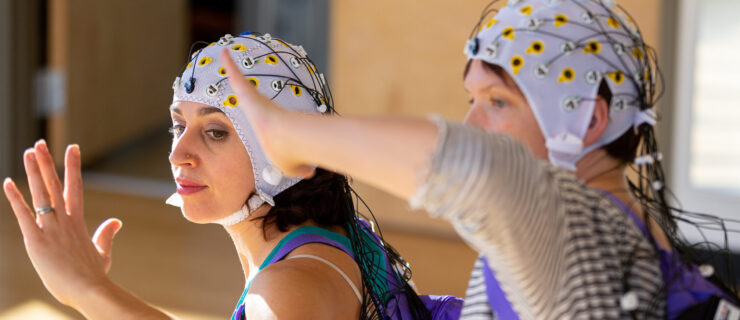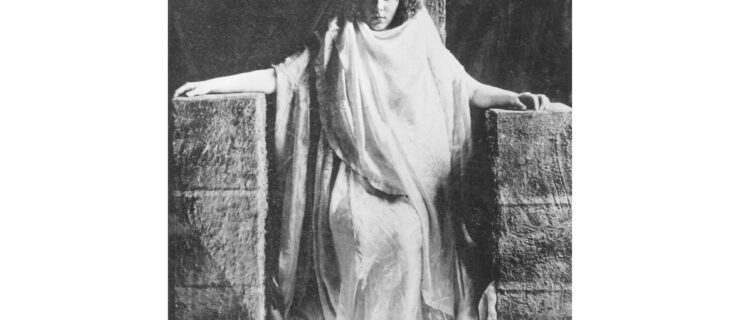Let’s Ditch “Best Practices” and Embrace More Artist-Centric Administrative Habits
Earlier on in my career, a dance organization I worked with hired a highly respected branding firm. They’d been tasked with developing our new logo and website. After months of consulting, where they attended performances and classes, observed and even participated in rehearsals, they were preparing their final proposal and asked for advice on how to make sure the presentation would really land. We suggested that they avoid using their go-to: PowerPoint. It is such a flat, stagnant modality, particularly for a time-based medium like dance.
They took that to heart. Before their presentation, they removed the table and chairs from their conference room, and my colleagues and I stood while dozens of their staff, dressed all in black, paraded through the space with large placards. There was drama and choreography as they cycled through a point more than once or disrupted the timing by flipping a placard over, sometimes revealing a second statement on the back. Our company loved it! Afterwards, the head consultant told us that in order to perfect the presentation, the firm had learned to rehearse, and the experience doubled as a team-building exercise.
Years later, I regularly reflect on that moment. Something so natural and easy in our dance world—rehearsal—was transformational for them. Why can’t we harness that simple magic and challenge our own approaches to arts administration?
There are a lot of practices across the “professional” world that we employ because we think it’s what we are supposed to do, like a bunch of adults playing office. Professionalism has also been used as a weapon to prop up institutions and systems that perpetuate income disparity and white privilege. This conditioned way of thinking and working impacts dance artists and administrators alike.
At the National Center for Choreography at The University of Akron, we recently launched our Creative Administration Research program (CAR), supporting dance artists and pairing them with Thought Partners (experienced agents, managers, funders, curators, artists, etc.) as they dig into and challenge longtime “best practices” of administrative thinking. While they’re encouraged to embrace their creativity as part of their administrative practices, I have had so many conversations with choreographers peppered with statements like “I need an executive director…” (even though they have no other staff) or “We need individual donations” (without really identifying who might actually give and why, as well as how those relationships will be managed). Those kinds of declarations are presumptive conclusions about what “professional” structures can be. CAR encourages artists to identify what they really might be looking for in administrative support rather than starting with a position’s title; or to examine how traditional practices to cultivate individual donations might not reach communities with whom they want to connect.
Our field, our leaders and our workforce in and outside the studio already have the creative tools. But we need to unlearn what we think we should be doing in order to develop administrative practices that more accurately mirror our artistic goals.
Internally at NCCAkron, we’ve been challenging some of our own practices. It’s been a year-plus of weekly team meetings on Zoom, which can feel just as mind-numbing as those PowerPoint decks. A few months in, my colleagues and I could feel things getting stale. Choreographer Helen Simoneau had led a movement workshop with presenters in pre-pandemic times, and I asked if she would try translating it to the digital space with NCCAkron’s team as beta testers. (FYI: Not all of our team members have movement backgrounds.) With music on in the background, Helen guided us through a group improvisation. She highlighted our options and choices to listen, move and communicate with each other virtually. “Watch and mirror someone else…. Turn your video off, and then in response to watching others, choose when to come back in—er…on.” We even performed for each other in pairs, and it truly felt like we had come together and seen and heard each other differently for the first time in a long time. I recognize it has been awful for dance artists to try to create or rehearse via Zoom, but tapping into some of those same tools of collaboration and improvisation was a micro-epiphany for our team. I was reminded of a leadership retreat where the facilitator asked, “Do you walk into a room with everything decided and your goal is to convince others you’re right? Or are you open to other possibilities before making a decision?” Accessing the creative skills developed as a dancer can make an administrative meeting more responsive and collaborative.
Our research and discovery sessions with CAR artists are still percolating, but I can share one revelation so far. You may recall Raja Feather Kelly | the feath3r theory and its successful virtual fundraisers on Kickstarter long before COVID-19. While interviewing Raja about these crowd-funding initiatives, he reflected that he saw them as artistic productions themselves. Rather than executing a textbook gala, Raja embraced a sense of play and artmaking.
To all my dance colleagues, especially those behind the scenes, I challenge you to ask how you can creatively interrogate your business practices, instead of assuming they are “best” or “professional,” as if there is only one way. Where do you want to experiment administratively? You don’t need to upend all of your practices tomorrow: Start small and evolve. And, particularly for choreographers who simultaneously tackle administrative responsibilities, I urge you to embrace your whole self. Don’t leave your creativity in the studio.




